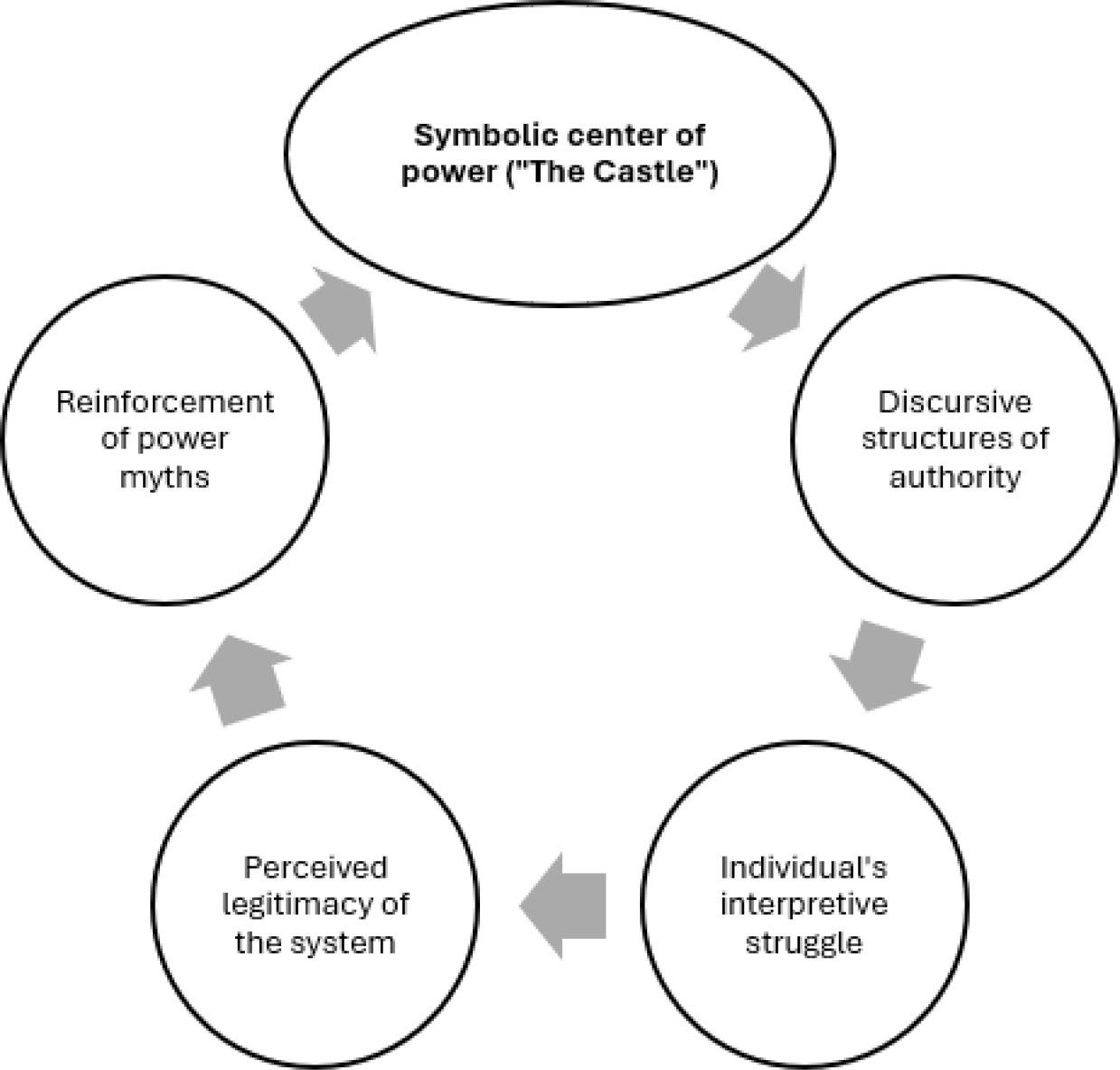Figure 1.

Leadership, illustrated through Kafka’s The Castle
| The Castle | Example of administrative leadership |
|---|---|
| “The Castle has enormous power, but no one can explain what it consists of, and all attempts to approach it only lead to greater uncertainty and confusion.” | Discursive leadership is represented by individuals continuously negotiating their positions within a complex hierarchy. Leaders and followers alike are caught in ambiguous power dynamics, where the rules are unclear, and authority is decentralized. This creates an ongoing process of negotiation, where leadership is not established through clear acts of control, but rather is an interaction shaped by constant reinterpretation of the situation. |
| „It is characteristic of this authority that the nearer someone is to it, the less he notices its existence, while those who are farthest away from it can make its power the subject of their constant thought.” | Power is not exerted through direct action, but through distant, subtle mechanisms. Leaders do not exercise direct control, but their influence is felt indirectly through complex layers of intermediaries. This reflects a discursive leadership model, in which authority is dispersed and felt through relationships rather than direct commands. |
| „There’s no definite policy to guide the officials, and no way of judging what they do, and the usual result is simply paralysis.” | This quote illustrates the inefficiency and paralysis that can occur when discursive leadership becomes too ambiguous. Without clear guidelines or accountability, leadership becomes ineffective, highlighting the importance of clarity and structure within discursive processes. |